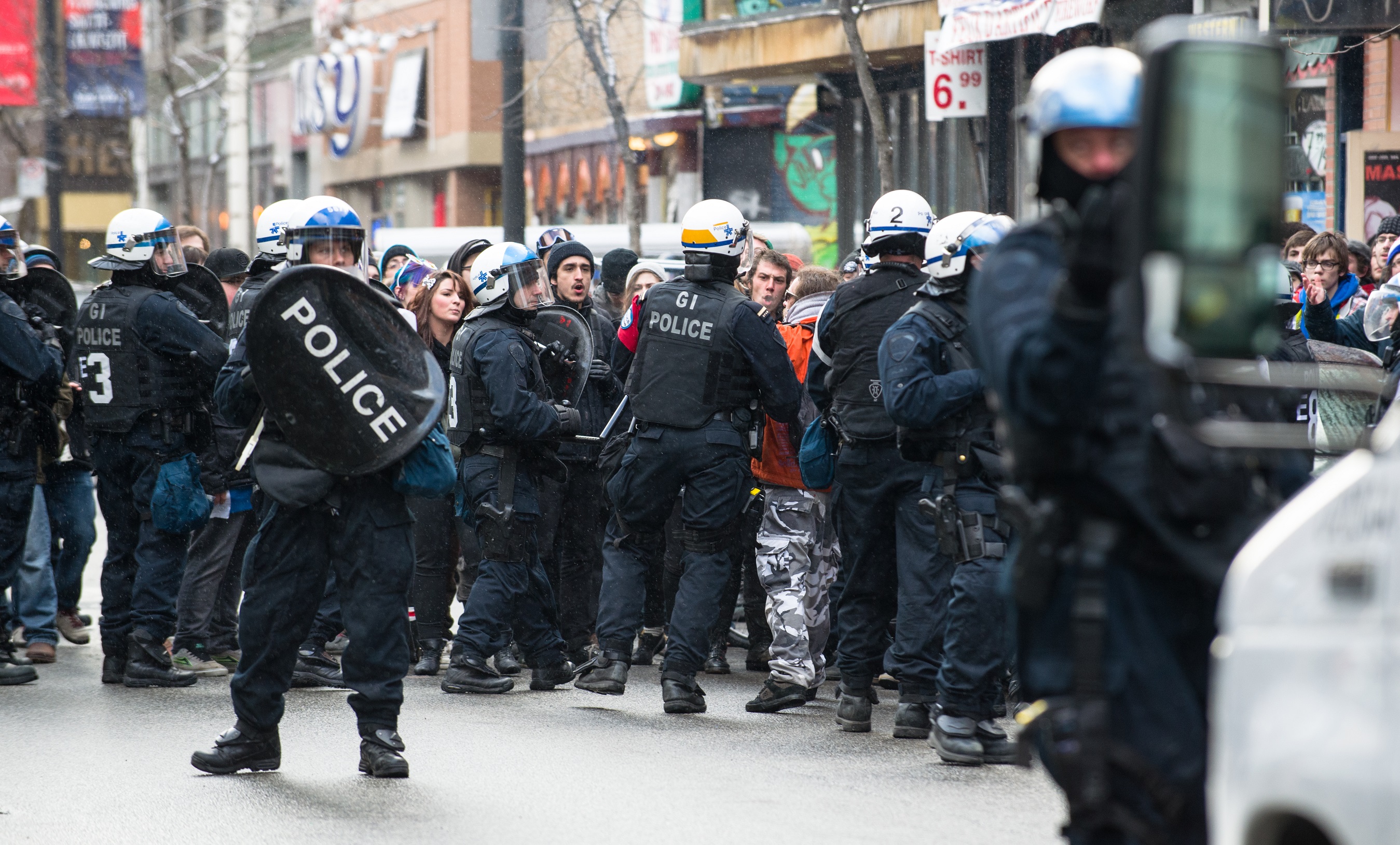The Montreal Police are enacting mass arrests through a municipal bylaw in an effort to stifle protests in the downtown core over the last few weeks.
The Service de police de la Ville de Montréal has come under fire from some demonstrators who feel the police are stifling their right to protest.
“The exercise of democracy has to be done without disruption to ensure that no unfortunate event take place. Those who cause disruptions have to be excluded from demonstrations, so that individuals who want to be heard can do so peacefully,” municipal bylaw P-6 states.
A few hundred people set out from Place Émilie-Gamelin last Friday night for a demonstration meant to remember the one-year anniversary of the massive March 22 student protest that took place last spring. The protest ended with 294 arrests including journalists from The Concordian and The Link.
Police officers kettled demonstrators at the intersection of de Maisonneuve Blvd. and St-Timothée St. before announcing the protest was over. Kettling is a riot tactic employed during protests to control crowds; police section off demonstrators from all sides before containing individuals to a limited area with only one exit in order to swiftly end the protest.
“I’m still trying to understand why journalists would be fined,” Hera Chan, the photo editor at The McGill Daily said. “We’re all members of community, however I don’t think it’s a correct method, I don’t believe police should use this method — at the end of the day who is going to write the story?”
Chan explains that even though she identified herself as a member of the press, she was still arrested and fined last Tuesday night during a student protest.
“I do see a change in enforcing the law, in much stricter fashion, trying to do mass arrests of entire protests,” Chan said. “As you can see by numbers, people who come out to the streets has gone down drastically but numbers arrested have not.”
Many people who were arrested received a fine of $637 under the violation of municipal bylaw P-6 according to the media relations of the SPVM. According to bylaw P-6, protesters must “provide by writing, eight hours in advance, the date, time, the duration, location, and if applicable, the route of the demonstration.” However none of the protests did so and so were declared illegal.
The law also states that individuals are prohibited to participate in a demonstration assembly, parade or group with your face covered, such as by a scarf, hood or a mask. The municipal bylaw was simultaneously passed at the same time as Bill 78 last year in order to limit demonstrations.
However, while the municipal bylaw was not quick to be applied last year, there has been a noticeable change in the last few weeks.
“I thought the protest was really disgraceful and disgusting how they arrested more than 250 people after five minutes of the protest,” said Université du Québec à Montréal student Camila Martinez-Lisle. “No disrupting activity had been made apart from walking in the street and chanting slogans.”
Martinez-Lisle believes that the SPVM has “been more and more aggressive and violent against protesters.”
Similarly, Montreal’s annual anti-police brutality march this year led to many arrests. More than 250 people were detained and ticketed the night of March 15.
Christopher Curtis, a former Concordia student and current reporter for The Gazette, was also kettled and detained during demonstrations for hours.
“For better or worse, the police will be deciding who is a legitimate media source and who eats a $600 ticket,” Curtis said. “And I think that means student media and some lesser known media outlets can’t be at the wrong place at the wrong time.”
Curtis explained that while in the kettle he asked protesters why they came and many said that some of their friends didn’t come because they weren’t willing to pay another $600 fine.
Several thousand protesters also took to the streets on March 5 for the education summit where Premier Pauline Marois announced the indexation of tuition fees by approximately three per cent per year indefinitely. The protest resulted in 72 people being detained, 62 protesters being ticketed for unlawful assembly and 10 arrested during clashes police officers.
The SPVM was unavailable to comment by press time.
With files from Kalina Laframboise
